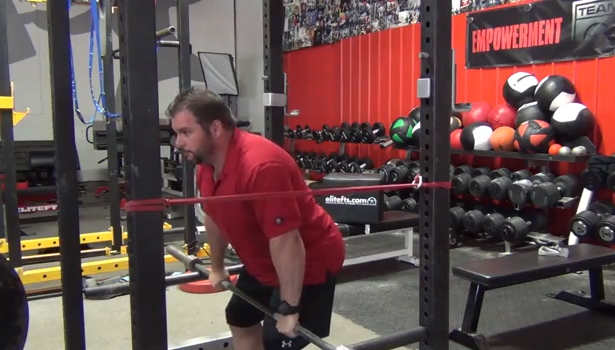
Elitefts.com™ Director of Education provides a way to standardize the High Pull exercise based on an objective bar height. This concept was first introduced in the early 2000s from an article by Charles Staley.
There two major reasons strength & conditioning coaches do not incorporate Olympic Lifts into their programs.
- They believe there are more effective and safer methods to teach the Olympic lifts.
- There are not in the right situation or have the proper equipment to incorporate the Olympic Lifts effectively.
Should I incorporate Olympic Lifts in my Program (granted they fit your philosophy)? Here is a quick checklist:
- Do I have the knowledge base to teach the bio-mechanical positions and the movements?
- Do I have the experience with identifying and addressing technique discrepancies while instituting corrective strategies?
- Do I have enough qualified coaches for the number of athletes I have at one time in my facility?
- Do I have enough time during the training session, training week, and training cycle with my athletes to ensure technical proficiency of the lifts?
- Do I have enough space and enough stations to safely accommodate novice athletes performing explosive movements (some of them overhead)?
- Do I have the proper equipment (the correct bars, bumpers, platforms, or appropriate flooring) for my athletes to execute these movements?
- Are my athletes’ chronological, biological, and training ages all conducive of productive training sessions using Olympic weightlifting movements?
One of the advantages of incorporating High Pulls is the athletes can still execute the triple extension movement with out the technical difficulty of the catch phase. Some coaches would rather their athlete avoid the absorption of force during the catch, while other feel it is an essential component. Regardless, it is very difficult from a technique teaching standpoint to incorporate both into a program.
Olympic Lifts OR High Pulls; But, not Both
Emphasis on the final pull of the arms with a High Pull can negatively effect the transition to the catch phase. Some coaches teach "pull with the fists" but this is not the same as a standard high pull. These two exercises are a classic case of being close enough to confuse the lifter, not close enough to elicit a training effect. Exercises like clean pulls, snatch pulls, and shrug pulls are a suitable replacement to high pulls to still reinforce proper movement patterns. More thoughts on this concept can be found at these two links:
Clean High Pull Q&A
Technique Work that is hurting your technique
Jim Wendler has said the the problem with the High Pull exercise is there is no finality of the lift. With cleans and snatches, the athlete either completes the lift or not. The High Pull is subjective by nature. Using a "Target System" my allow the High Pull to be more of an objective measurement of power.
- Bands are flexible and will not inhibit the movement if contacted by the barbell
- Bands can be quickly adjusted for the individual height of each lifter.
- Bands can also be adjusted at different but standard heights to adjust how heavy the athlete will work up to based on the objective height of the pull.
- The targeted high pull will allow the lifter to pull the barbell as high as possible give then load based on distance from the starting position not the lifter's body position. this will help reduce the lifter "lowering themselves" to the barbell.
Standard Levels of High Pull Height (measure when athlete is standing upright):
- Lowest Pull: Belly Button (any lower would be considered clean pulls, snatch pulls, or shrug pulls depending on terminology).
- Mid-Range Pull: Just below Xiphoid Process
- Highest Pull: Armpit or Nipple line
5 Week Training Block for the Targeted High Pull
- Wk1.) Pulls to Xiphoid Process,
- Wk2.) Pulls to Armpit. Nipple Line,
- Wk3.) Pulls to Belly Button, 5 triples
- Wk4.) Pulls to Armpit Nipple Line, 8 doubles
- Wk5.) Pulls to Xiphoid Process, 6 doubles








